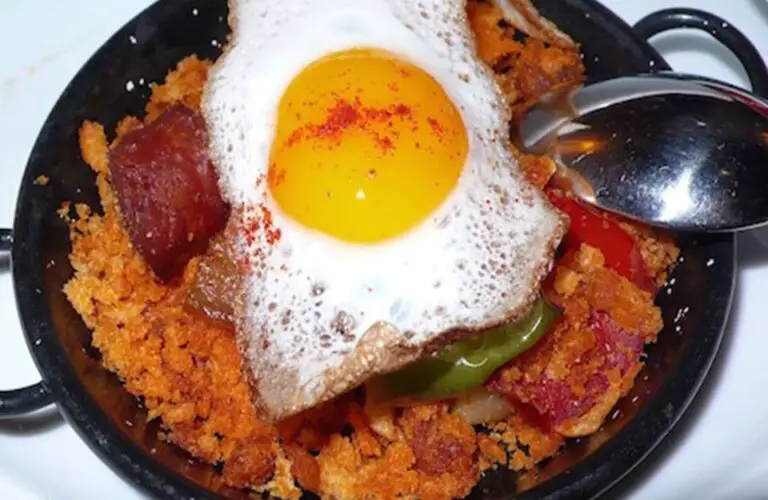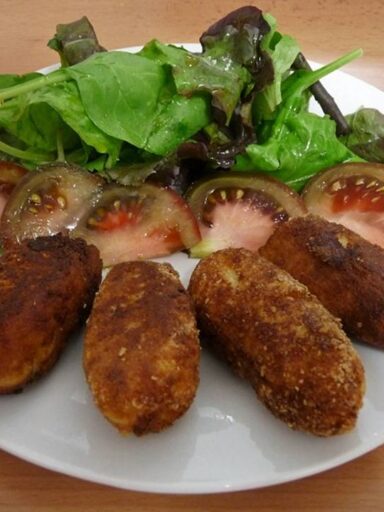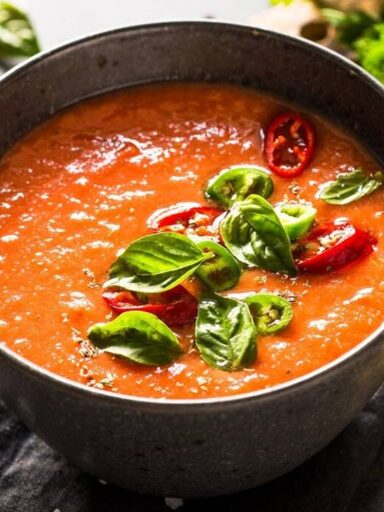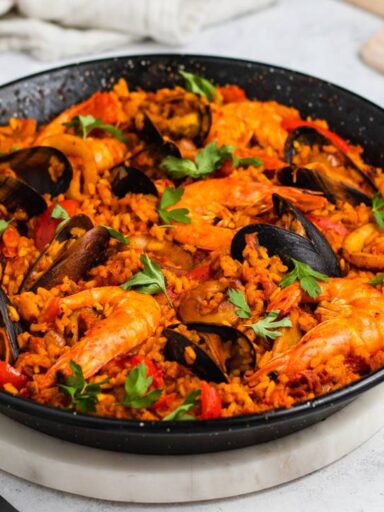Migas Traditional Spanish Dish
Migas traditional Spanish dish with humble origins is commonly associated with shepherds and rural communities. The word “migas” translates to “crumbs,” which reflects the dish’s primary ingredient: stale bread, typically leftover from previous meals. Historically, it was a way to avoid wasting bread, turning it into a hearty and flavourful dish.
A Dish with Several Regional Variations Across Spain
Migas has several regional variations across Spain, each with its unique twist, but the foundation remains the same: day-old bread soaked and then fried with various ingredients. In some regions, particularly in the southern areas like Andalusia, migas is made with semolina instead of bread. However, the bread-based version remains the most iconic.
Preparation
To prepare the traditional bread-based migas, the bread is torn into small pieces and moistened slightly with water. These crumbs are then fried in olive oil along with garlic, olive oil, and other flavourful ingredients. Chorizo, pancetta, or bacon are commonly added to provide a rich, savoury taste. The dish is often complemented by vegetables such as bell
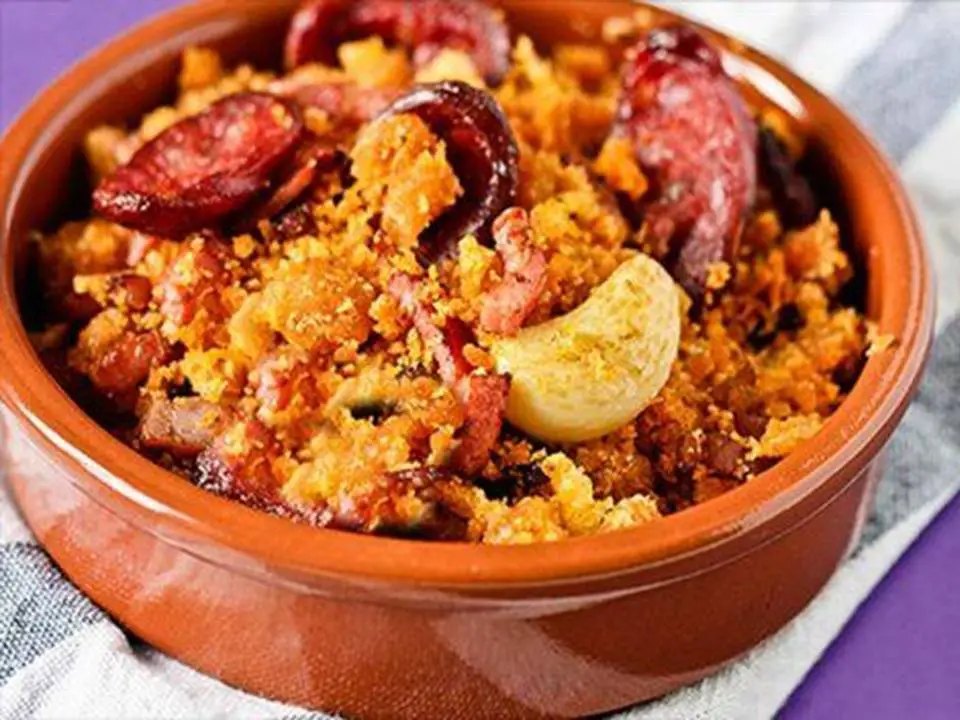
peppers, onions, and sometimes tomatoes. In some parts of Spain, like Extremadura, it’s common to serve migas with grapes or melon, adding a sweet contrast to the salty, meaty flavours.
Enjoyed as a Breakfast or Lunch Dish
Migas is typically enjoyed as a breakfast or lunch dish, especially after long hours of labour in rural areas. It is filling and satisfying, making it ideal for fuelling a day’s work. In some cases, it is accompanied by fried eggs or sardines to enhance the dish further.
While originally a simple dish of leftover bread, migas have become a celebrated part of Spanish cuisine. It can now be found in restaurants and tapas bars, offering a taste of Spain’s rustic culinary traditions. Whether enjoyed as a savoury breakfast or a hearty lunch, migas is a symbol of Spanish resourcefulness and flavour.
A Traditional Spanish Dish with its Roots in the Rural Countryside
Migas is a traditional Spanish dish that has its roots in the rural countryside, where it was a way to make use of leftover or stale bread. Although its origins are humble, migas has become a beloved dish in Spanish cuisine and can be found in various forms throughout the country.
The basic concept of migas involves frying small pieces of bread in olive oil and mixing them with a variety of ingredients such as garlic, chorizo, bacon, peppers, and sometimes even seafood. The result is a hearty and flavourful dish that is often served as a main course, especially during the colder months.
A Versatile but Full of Flavour Dish
One of the great things about migas is its versatility. While the essential ingredients remain the same, different regions of Spain have put their own spin on the dish, incorporating local ingredients and culinary traditions. For example, in central Spain, it’s common to find migas made with grapes or melon, adding a touch of sweetness to the savoury dish. In the south of Spain, migas often include sardines or other types of fish, reflecting the region’s strong seafood culture.
Preparing migas is a labour of love, as it requires patience and attention to detail. The bread must be fried slowly to achieve the perfect texture—crispy on the outside and tender on the inside. The other ingredients are added gradually, allowing their flavours to meld with the bread. The end result is a dish that is rich in both flavour and history.
A Dish with a Special Place in Spanish Culture
In addition to its delicious taste, migas also hold a special place in Spanish culture. It’s a dish that is often enjoyed in a communal setting, bringing people together around the table. Whether it’s a family gathering, a festival, or a celebratory event, migas is a dish that fosters a sense of togetherness and conviviality.
Overall, migas is a dish that embodies the spirit of Spanish cuisine—simple yet full of character, adaptable to local ingredients and traditions, and best enjoyed by others. Whether you’re savouring a classic version or a regional variation, migas offer a taste of authentic Spanish culinary heritage.
